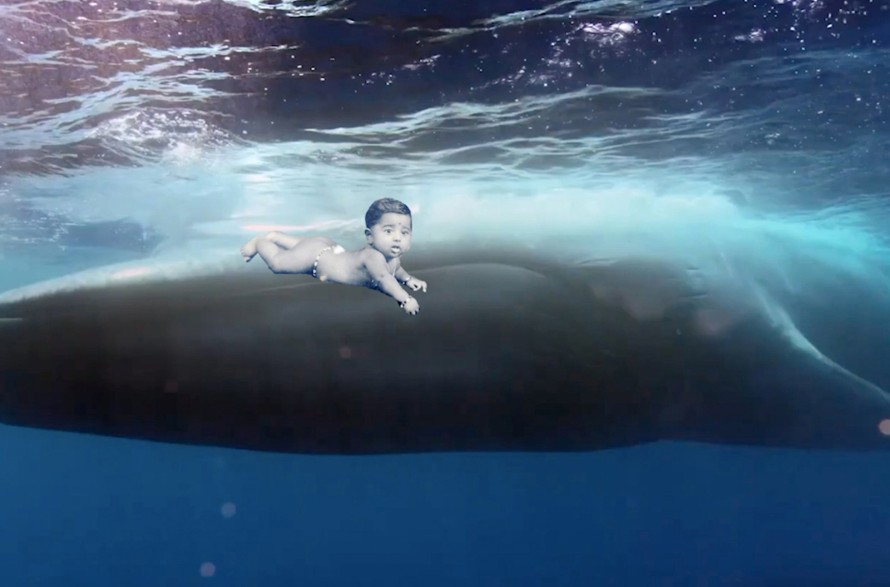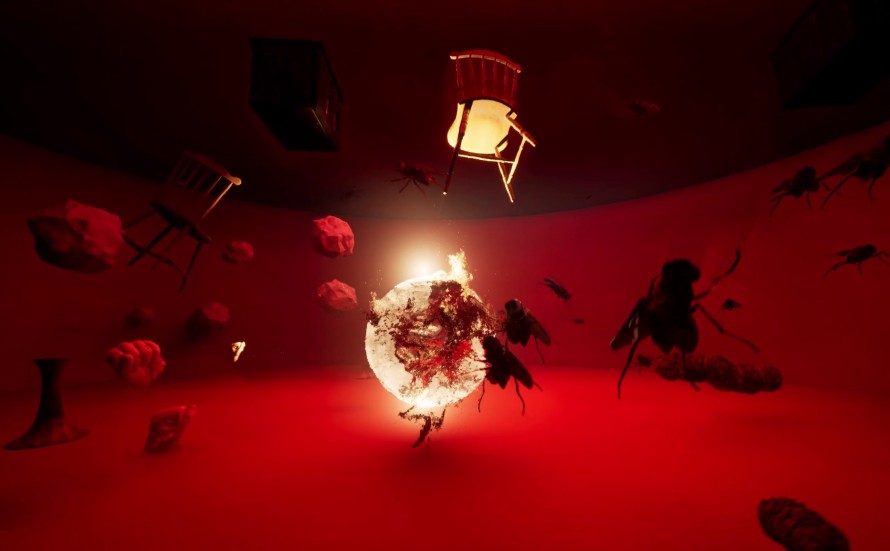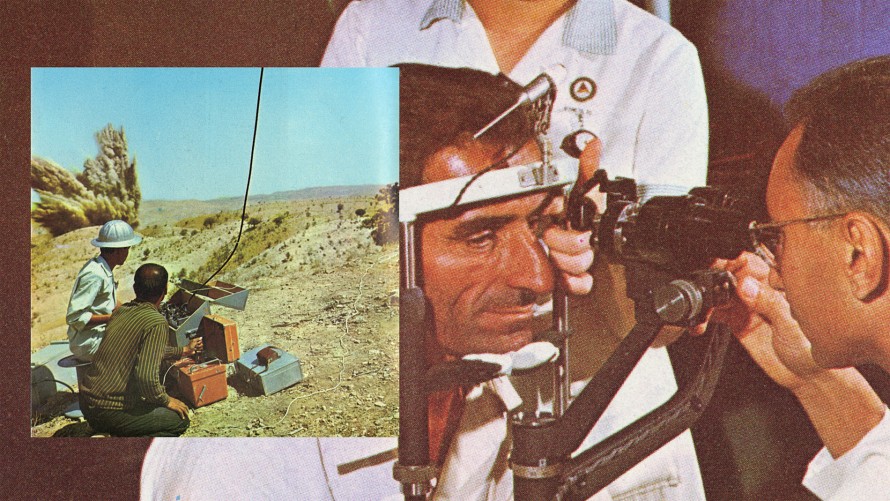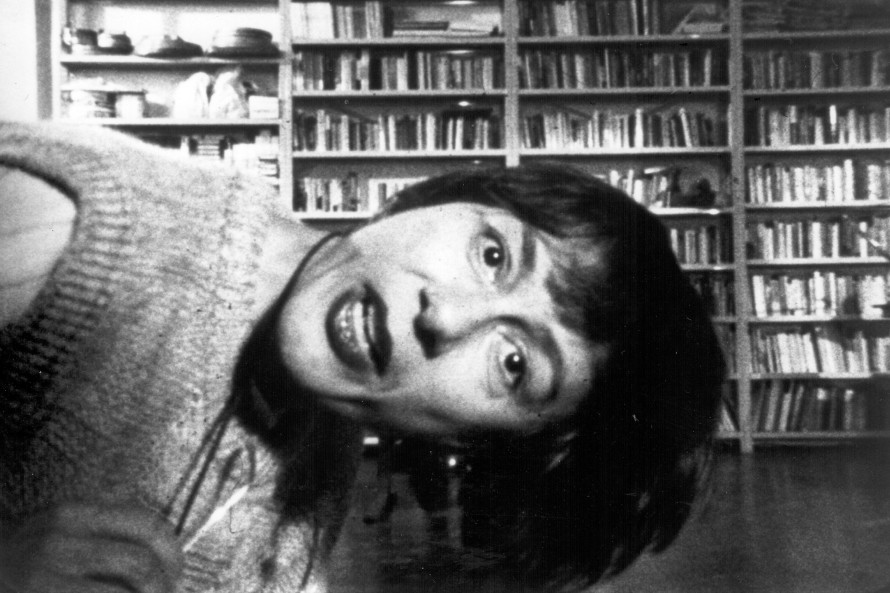2023 | Forum Expanded
An Atypical Orbit
With 33 works from 19 different countries, Ala Younis and Ulrich Ziemons are launching their second year as section heads of Forum Expanded. In the interview, they talk about moments of attraction and repulsion, unusual perspectives and further focal points in the 2023 programme.

Desert Dreaming by Abdul Halik Azeez
You described this year’s films and installations as artistic experimentations, with an emotional focus to establish atypical orbits around shattered political and personal stories. How did this overarching theme develop in the selection process?
Our programmes form more or less organically, without a preconceived notion of a topic or a theme that is defined at the outset and around which we select works specifically. But while we are working on the selection, usually overlapping considerations and interests start to emerge amongst the films and installations we are seeing and discussing. Many of the works we saw this year seemed to be concerned with bridging or negotiating gaps and distances, be they spatial or temporal.
The works were often set in motion by personal or family histories and circumstances. The artists and filmmakers in the programme deal, for example, with experiences of exile and migration; they burrow into their families’ past, or they try to imagine the world from the viewpoint of entities other than humans.
They share a desire to know and uncover, to lay bare, and a tenderness born out of emotional attachment and compassion. The image of the “atypical orbit” came up in our thinking, as it seemed to capture something about this tension that connects many of the artists and their themes - a tension not unlike the gravity at work between celestial bodies circling each other. These bodies are pulled towards each other and simultaneously try to drift apart. They are held in a delicate state of equilibrium. But this equilibrium is not a given, not an unchanging constant. The relative position between the two gravitational poles constantly changes and oscillates, often in unforeseeable ways.

Home Invasion by Graeme Arnfield
Can you give a few examples of what you outlined about the concept?
Tibetan-American artist Tenzin Phuntsog presents five works in the group exhibition An Atypical Orbit , in which the familial is an anchor to reality. Living in exile, his parents became the pillars of that imagination and his ways to sustain these realities; an unreachable homeland. Intimate portraits of the parents and loving relatives performing the banal every day (like sleeping and caring) become illustrations of the inevitable passing of time, that is, at the same time, creating temporal and spatial trenches to their homeland. The films are fixed or fixated on an instigator, be it slipped images of someone's past, a detachment forced on pieces of earth, emotions sustained, or an abundance of ones.
On the other hand, Deborah Stratman chronicles earth from the perspective of its stones in Last Things. The film oscillates between scientific and avant-garde imaginaries, delves into micro- and macrocosm experiences and brings the viewer very close to where fascinating complex, transparent, colourful and glistening textures make up the inside of these solids’ molecules.
In the film programme, the change of the viewer's perspective, the adoption of distinctive and sometimes less present points of view, is often a driving force for the works. Graeme Arnfield shows us the world from the viewpoint of the door peephole in Home Invasion. He finds and reproduces stories of paranoia as they become home inventions of security and surveillance.

Simia: Stratagem for Undestining by Assem Hendawi
Were there other topics that you identified that several of the works touch on?
Considerations and inquiries around artificial intelligence are the basis of two works in the film programme, for example. In Simia: Stratagem for Undestining, Egyptian artist Assem Hendawi collaborates with different artificial intelligence processes to weave a narrative that responds to a history of capitalist and colonialist violence in the Middle East. He feeds the AI machine with statements taken from Frantz Fanon, Marx, and other thinkers’ works, as well as archival images from the Middle East from 1940 to the 2000s, such as ones of modernist architecture from Africa. The AI responds with images and textures that Assem repurposes again in modelling a world that is imagined beyond the generic stereotypes that are used by the algorithms. He asks how we can repurpose the thinking about technology towards a positive and emancipatory vector while being aware of technology’s history and present in the shaping of capitalism and colonialism and even police/military states.
Filmmaker and cultural theorist Manthia Diawara also approaches AI: In AI: African Intelligence, he travels to Senegal to follow a group of heiresses of spirits from the Lebu communities and experience their Ndeup ritual up close. He addresses the precarity of these intricate and intangible practices and thoughts in African cultures as they get overshadowed and dissolved by this transfer to algorithm-based dependence.

Revolver by Crystal Z Campbell
Exemplary, likewise in title and narrative form, is the work of Crystal Z Campbell. Revolver shows circulating kaleidoscope images over which a descendant of the Exodusters recounts memories, dreams and visions of her ancestors’ experiences. How did you experience this work?
Crystal Z Campbell’s work is based on the phenomenon of pareidolia - which describes a visual experience of something that is not there. Examples would be seeing a face in the foam on top of your coffee or an elephant, let's say, in the shape of a cloud in the sky. In Revolver, pieces of ceramics are presented to the camera and shown in kaleidoscopic variations. These images are combined with an oral history of the Exodusters. The Exodusters were African Americans who migrated to the US-American Midwest after the Civil War and founded cities there. The narrator of this history combines recollections and retellings with what appear to be dreams and visions. So the work oscillated between an imagined and a remembered past, in a sense. But it does so in a way that does not privilege one way of remembrance over the other. It is certainly a work that requires repeat viewing to get all the details of the narration, which is very intricate and, at times, elliptical. But we feel that is also a statement on how memory works - it’s not an unchanging catalogue of stable events and facts. Still, it evolves and fluctuates, depending on who remembers and when.

Sahnehaye Estekhraj by Sanaz Sohrabi
The makers often follow the objective to inspect, probe and scrutinise their investigated subjects to open-up surprising trajectories. Could you share an example?
Sahnehaye Estekhraj comes to mind here. The film is a severe but visually playful investigation of the link between the exploitation of raw materials, colonialism and image technology. Analysis, inquisition, recovery, repatriation and reclamation are Sanaz Sohrabi's tools in her extensive research on the history of the search for oil in Iran by British Petroleum in the early 20th century. These searches were conducted using the latest imaging technology at the time and in the process, the landscape was disrupted by explosions which were part of the probing process. The filmmaker looks at what residues remain in the images, what allegiances change in lingering archives, and how looking at modern constellations of power allows tracing seepages into today's politics, which shape voluntary and involuntary migrations of emotions and bodies.
Another work of note in this respect is Anna Zett’s Es gibt keine Angst which resets the relationship to surveillance through fascinating findings from the Archive of the GDR Opposition. Zett combines mostly unseen footage from the late 1980s and early 1990s - of meetings, sit-ins and the second takeover of the Stasi headquarters. In her "short thriller" Es gibt keine Angst, these images of the end times of the GDR are used as markers of both fear and alienation brought on by the police state, but also of hope and resistance.

Borrowing a Family Album by Tamer El Said
The narrative technique of the film Exhibition by Mary Helena Clark is also noteworthy. It is reminiscent of a guided museum tour. A one-sided conversation between the female narrator and the viewer is created. Which subjects are pictured and what are the qualities of this narrative technique?
Exhibition is told from multiple perspectives, and it borrows imagery from a wide range of sources. Basically, it tells the story of two women and their relation to objects and objectification. One of them is an artist who legally married the Berlin Wall and kept a large collection of architectural models in her home. The other is a woman who attacks a painting by Velasquez with a knife. Both of these women have intense feelings towards objects. In the film, they speak in a single voice, so the question of perspective and subjectivity is something that is highlighted formally.
And speaking of narrative techniques, we also could point out Mangosteen by Tulapop Saenjaroen from Thailand. On its surface, it is a narrative short film about a young man who returns to his hometown to start work in his family’s fruit juice business. But the film quickly turns into a work about storytelling itself, performing many narrative twists and turns.
In a similar line Borrowing a Family Album invites the visitors to look for their own recollections in amateur film footage which the artist Tamer El Said himself appropriated for his installation, creating an act of collective remembrance in the process.
Memory is perforated in Tamer El Said's work. He patches parts of this memory by borrowing amateur-found footage from a Greek family and asks for the visitors' engagement to reconstruct intimate reclamations for this memory. He is looking for images of memories that were destroyed in his childhood following a dramatic family accident and the loss of a sibling. In this work, the filmmaker is attempting to bring from the visitors’ imagination what could be a family photo for him, one for phantoms of people that exist only as collaged stories.

The Man Who Envied Women by Yvonne Rainer
Remarkable about the selected films are the numerous different production countries, which count 33 works from 19 different countries. How did you achieve the inclusion of so many countries?
We have the great privilege to be tapped into a wide network of filmmakers, artists, curators and institutions worldwide. Through the work that the selection committees of Forum Expanded, Forum and also the Arsenal - Institute for Film and Video Art, which organises these two sections of the Berlinale, have done over the many years of selecting and programming for the festival, many connections and contacts were made and maintained. Also, we are in constant contact with our other Berlinale colleagues, especially from Berlinale Shorts. Each of the members of our curatorial team brings their professional networks to the group. As we are - among the four of us - based not only in Berlin, but also in Bangalore, India and Amman, Jordan, there are different regional connections, also. We are aware, though, that we have more work to do to forge connections in parts of the world and with film and art communities that so far have not had a presence in our programme and we are constantly working on this. We want to keep Forum Expanded continually evolving and the aim is to present a programme as wide ranging as possible, geographically, but also in other respects. This year, for example, we have filmmakers in the programme ranging in age from 22 to 88 years old, Dan Guthrie and Yvonne Rainer, respectively!